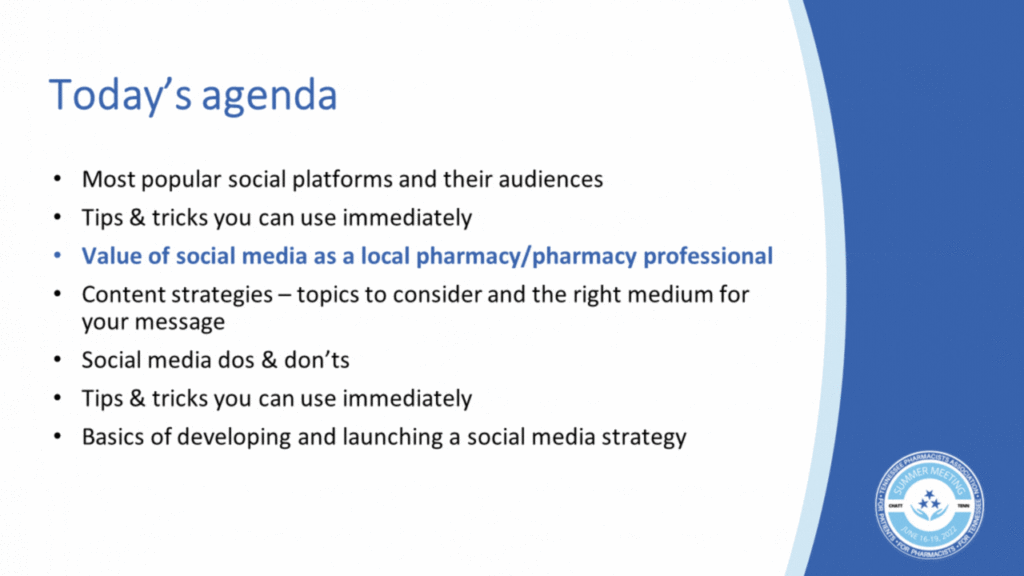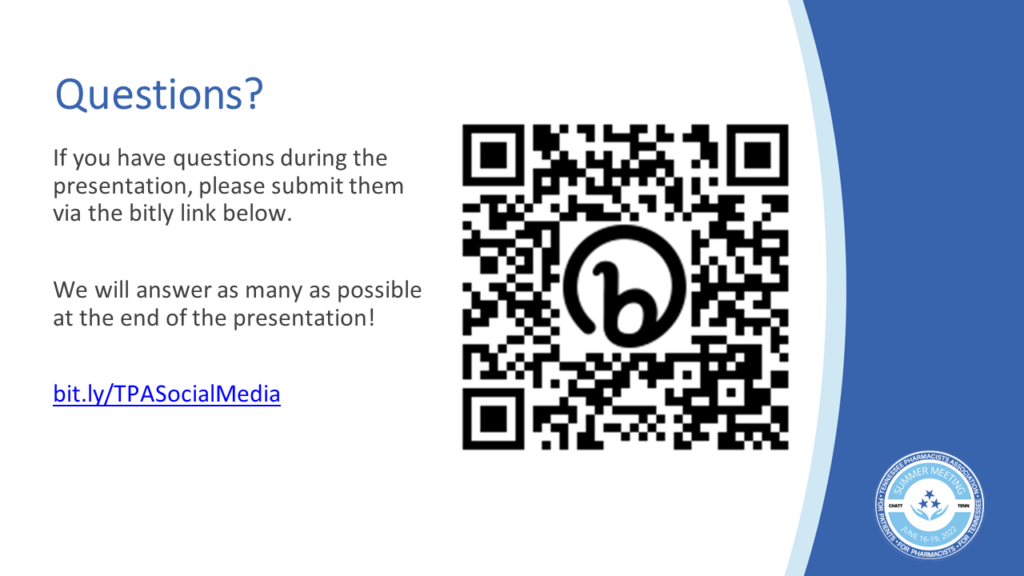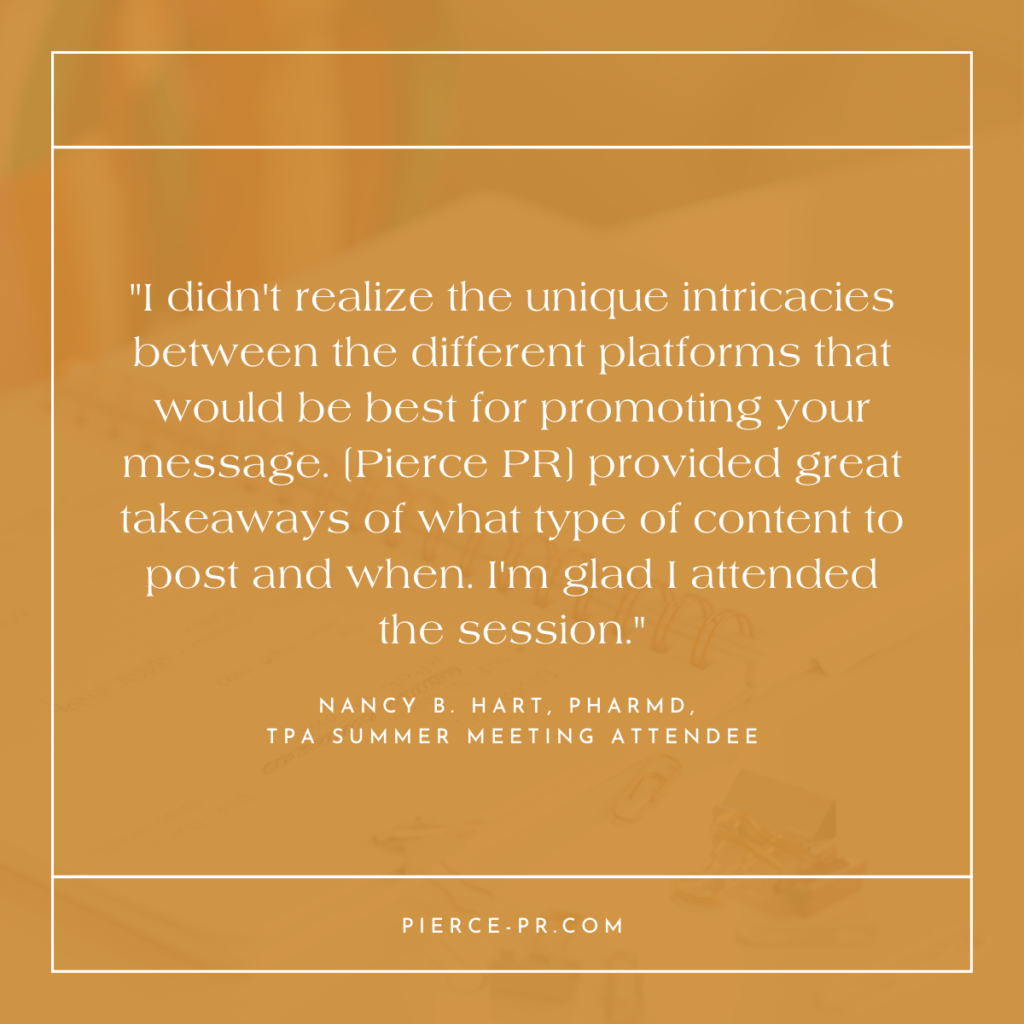Speaking at a conference or event? Consider these 4 tips
One of the best ways to build visibility and credibility is through speaking engagements. Securing speaking opportunities for executives at conferences, trade shows and other events held by third-party organizations helps build awareness and establish thought leadership on priority business topics.
The Tennessee Pharmacists Association, a Pierce PR client and the only professional association representing pharmacists in all practice areas across the state, recently invited Pierce PR’s President and Founder Julia Bonner and Senior Account Manager Bri Carlesimo to lead a breakout session on the value of social media for the pharmacy profession at the organization’s 2022 Summer Meeting.
Although there were many great takeaways from the session, Bri is sharing four of the biggest to help ensure your next speaking engagement is a success.
1. Ensure you’re prepared and arrive early
The importance of an early arrival to your speaking engagement cannot be overemphasized. Arrive 30 minutes prior to your presentation’s start time. This allows time for any adjustments to be made before the room begins to fill with attendees.
Double check that the slides you developed are uploaded correctly, ensure videos or other audio elements are working properly and test your mics or other technology. Pack a charged back-up laptop and any adapters necessary to plug in your own tech in case of an emergency.
When we arrived in the room for our presentation, the videos in our deck weren’t playing properly. Fortunately, we were there early enough for the onsite AV support professionals to find and connect the adapter needed for video projection.
2. Engage the audience
Even the most interesting and knowledgeable presenters can lose the crowd’s attention if they aren’t involving or addressing them throughout the presentation. Keep the audience engaged throughout your presentation by asking questions, taking informal polls and pausing for reflection on key insights.

Ask questions that require different types of feedback – from raising hands to guessing games. Develop an agenda slide that’s shown at the beginning of every section, and lead each segment with a related question. Include surprising statistics or interesting photos to keep your attendees on their toes and tuned into the content.
3. Use a QR code for audience questions
Interruptions during a presentation can make speakers lose their train of thought or go off on an unintentional tangent. Instead of taking questions throughout your presentation, create a Google Form for attendees to submit questions to as they arise. Address the process for questions at the beginning of the presentation.

Take it one step further by creating a bit.ly link and QR code for easy access to the question form. Integrate slides with the shortened link and blown-up QR code at the end of every section to remind people to submit their questions throughout. At the end of the presentation, save time for a Q&A and review the submitted questions to answer the most pressing or frequent ones.
During our presentation, attendees took photos of the QR code with their phone. The code directed them to a Google form where they could easily submit questions in real time as we spoke. We showed the QR code between each section so there were multiple opportunities to access the form. At the end of the presentation, we reviewed the questions that had been submitted and answered the most relevant ones.
4. Provide ways to connect
Share your website and social channels at the beginning and end of your presentation. If you have a blog or newsletter with relevant insights, offer a signup link in your conclusion, and provide a copy of your presentation as a download from your website.
Following our presentation, several attendees connected with us on social media, and we were able to learn more about them and what they found interesting about the presentation. They also provided valuable feedback that we were able to turn into testimonials and share on our own social channels.

Good presentations require time, energy and preparation. If you’re going to make the investment of resources to deliver a presentation, make sure you’re maximizing the opportunity by considering the recommendations above. The best resources available on any given topic are the businesspeople who are currently succeeding in the field. By sharing useful information, you can establish or continue to build your reputation and your company’s reputation as a valuable resource.
Bri Carlesimo is a Senior Account Manager at Pierce Public Relations.